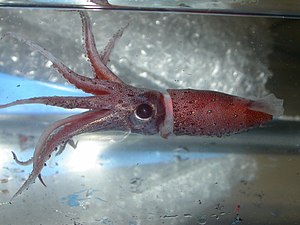Photophore

A photophore is a light-emitting organ which appears as luminous spots on various marine animals, including fish and cephalopods. The organ can be simple, or as complex as the human eye; equipped with lenses, shutters, color filters and reflectors.[1] The light can be produced from compounds during the digestion of prey, from specialized mitochondrial cells in the organism, called photocytes ("light producing" cells), or, similarly, associated with symbiotic bacteria in the organism that is cultured.
The character of photophores is important in the identification of deep sea fishes. Photophores on fish are used mainly for attracting food or confusing predators. Photophores are found on some cephalopods, perhaps most notably Watasenia scintillans, the sparkling enope or firefly squid, which can create impressive light displays.
-
Arrangement of various photophores on the squid Lycoteuthis lorigera
-
Photophores on a lanternfish, which worldwide is the most common deep sea fish
-
This anglerfish has a dorsal fin whose first ray has become very long and is tipped with a luminous photophore fishing lure
See also
References
- ^ "Cephalopod Photophore Terminology". Tolweb.org. Retrieved 2012-08-30.









